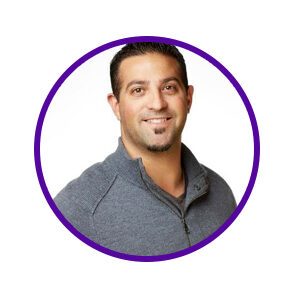17 Ways Small Brand Can Provide Big Brand Experience
20 Aug 2021 By: Natalya Bucuy
Updated
“Dream big.”
This piece of advice seems to pop up throughout our lives time and again. And as small business people, we do. We dream big. We reach for the stars. And we do what we love. We build business ventures, we find our audiences, and we try to serve our customers the best we can.
But sometimes we look at the large conglomerates, we see their astronomical successes, and we wonder if there is something we could be doing differently. Something that would make our services and products better, our customers happier. Something that can make our customers feel like they are part of a big brand experience. At the same time, we do not want to depart from our small business roots. After all, our customers’ loyalty often depends on the home-grown, small business feel.
Well, it turns out, we can still dream big while staying true to our small business nature. We asked the small business community the question of how a small brand can provide a big brand experience. Here is our round up of the best advice from industry experts.
1. Prioritize Content Over Ads.

“A frequent mistake I see from small businesses is [the tendency] to allocate the majority of their marketing spend to ads. However, customers often perceive ads as a business trying to force something down peoples’ throats. A much more effective approach is to do as the big brands do and use content marketing to engage your audience with relevant and useful information.”
Dave Nilsson, Founder and Director of The Converted Click
2. Quality Content

“When you need to make a big impact with a small budget, content marketing is the way to go. Small brands can provide the big brand experience by putting effort into quality content, such as videos, podcasts, and blogs. It doesn’t take a huge budget. In fact, the pillar approach to content marketing can maximize your impact with a minimal budget. This involves making one big piece of content and breaking it up into smaller ones such as quotes, tweets, video clips, and photos. It looks slick and professional to have content aligned on all channels, which you can do using this strategy.”
Shaun Heng, VP of Growth & Operations at CoinMarketCap
3. Focus On Employees

“As a small business, do as the big brands do and focus on your employees. Make it a core value that you build your business around. When you build a culture that supports and empowers your employees you will have a loyal and dedicated workforce that will help you take your company to the next level.”
Brad Touesnard, Founder and CEO of SpinupWP
4. Create An Experience

“Create an experience for your customers. For example, a Toronto jewelry store promoting its tarot card-inspired collection hosted free tarot card readings with local tarot card readers in their stores. This created a great experience that appealed to their target audience for the collection and generated social media buzz. It doesn’t cost a lot to hire a tarot card reader for a few days when you compare it to the marketing buzz it generated, the additional foot traffic to the store, and the increase in revenue – as people were more likely to purchase jewelry after a tarot card reading.”
Logan Mallory, Vice President at Motivosity
5. Hire Freelancers

“Local services aren’t the best focus for freelancers, but there are still ways these businesses can utilize contract-based and remote help. Every business needs a proper marketing team, for example. Some may need copywriters and content marketers, others may need designers, graphic artists, developers, and so on.
With markets like Fiverr, Upwork, Toptal, and even LinkedIn offering support for freelancers, it’s never been a better time! Tapping into the freelance world gives you access to a much wider talent pool, improving both the quality and competition of your business. What’s more, because freelancers and the business owner choose the rates, you can strike a fair balance between payouts — one that’s cost-effective for your business but still beneficial for the freelancers.”
Karl Hughes, Founder of Draft.dev
6. Encourage Online Customer Engagement

“Small businesses can learn strategies of customer engagement from big brands. By providing high-quality media to your customers, you’ll create a strong brand presence. Video content is a great way to give a larger brand experience. Several successful big brands have great online engagement with their audience. They don’t just post content regularly; they engage with the audience who interacts with their content. This helps build strong customer trust and helps your brand to stand out.”
Chelsea Cohen, Co-Founder of SoStocked
7. Employ Storytelling

“Storytelling is a great way to grab people’s attention while introducing them to [new] products or highlighting features of [existing] ones. There are loads of content ideas out there that can be used to show your story.”
Artem Minaev, Co-Founder of FirstSiteGuide
8. Define Who You Are

“Define exactly who you are, what you offer and to whom, and stick with it no matter what your prospects seem to be at the beginning! As an example, our boiler installation business is not the sexiest thing in the world. We knew that from the very first day, and yet we decided to go against the current and offer not only premium service, but also a fresh, witty, unique voice that most people don’t expect to hear from a boiler installation platform. Our premium service retains and delights our customers, but our voice and messaging is what has made us UK’s biggest brand in this niche.”
Sam Price, Founder Heatable
9. Establish Unique Voice

“Differentiate yourself from competitors and establish a unique, brand voice. When choosing a voice for my brand, I decided that an informative, authoritative, and credible-sounding tone would work best. The choice of brand voice would totally depend on what identity your brand is trying to convey and what mission it would like to accomplish.”
Antti Alatalo, CEO and founder of SmartWatches 4U
10. Look Big

“‘Look big’ means small businesses need to pay the money and invest in resources, so their brands look and feel like a major brand would. Don’t use stock photography. Pay good graphic designers to design your logo – using actual people having experiences with your brand in photo shoots is critical. It needs to look professional. And don’t be cheap – you don’t have to spend hundreds of thousands of dollars. Just getting solid new photographs of your own, which represent the brand, is huge. If you don’t have the money for a graphic designer or resources – Build your own skills. Use tools like your iPhone, PhotoShop to make the brand highly visual. You can also get creative – find real people who are authentic to use your brand and advocate for it.
‘Be consistent.’ Don’t be ‘cheap-looking’ one place and ‘expensive-looking’ another place. Once you have those assets, use them all over the place. Pick a color that helps to identify your brand and showcases the personality of the brand. Big brands are disciplined and consistent, and they do this really well. Small businesses can look big by practicing the same discipline.”
M. Kim Saxton, clinical professor of marketing at the Indiana University Kelley School of Business
11. Don’t Be Afraid Of Failure

“Nike’s small business lesson is to stay focused on the customer and not be afraid of failure. This implies having complete faith in their products, so they are willing to continue creating new, innovative and engaging products without fear that they won’t sell well or fail. Sure, small businesses can’t produce as much as Nike. From what they can do, they should completely believe in them.”
Jordan Bishop, founder and CEO of Yore Oyster
12. Personalize Customer Experiences

“Coca-Cola’s great experiment with putting [people’s] names on a bottle is a key example of this.
People love it when a company shows them that they’re not just a number on a spreadsheet. We adopted this strategy and started sending handwritten thank you notes to our customers after a successful roof remodelling job. We’ve received overwhelmingly positive feedback so far and plan to continue doing this. It shows that people crave a personal, human touch in their everyday lives.”
Zach Reece, Chief Operating Officer at Colony Roofers
13. Sponsor Events

“Big brands often will sponsor sporting events or concerts in exchange for advertising in the program or on the field. While you probably couldn’t sponsor the superbowl, you could help sponsor a local community event. This will result in more people in your community becoming aware of your brand and your brand developing a positive reputation for being involved with the community.”
Mark Daoust, CEO of Quiet Light
14. Be Consistent

“Your goal is to deliver a uniform aesthetic from first contact to eventual sale. This means focusing on design, both online and offline. It means training your staff, and getting them all singing from the same hymn sheet. You don’t necessarily have to bring in uniforms, but consider a dress code. The big brand experience is uniform, from start to finish.”
Rick Hoskins, Founder of Filter King
15. Packaging

“Ship products with bright packaging, preferably catering to themes every now and then. Bright packaging can be very attractive and can immediately set you apart from your competitors. A product that has been packaged with care will leave customers with a better buying experience, especially if you have put a lot of thought into the design. If it’s attractive enough, it may even be used around the house to store things, giving your brand name a constant presence around potential customers.”
Ben Wallington, CEO of Designerwear
16. Be Easy To Reach.

“Customer service is one of the things that stick to people and define their customer experience. Make sure that you respond to them and offer the best help. While chatbots are useful, talking to real humans is preferred.”
Ian Sells, co-founder and CEO of RebateKey
17. Get Media Coverage.

“To get media coverage for a company, there are a few options. To get quoted as an expert, look for opportunities on HARO, where journalists from multiple publications request expert advice from sources.
Reach out to journalists. Find journalists who are writing about a topic that’s related to your business where you can offer expert advice as a founder or CEO. Write a short but succinct pitch about a potential topic, how it would provide value to their readers, and share your contact information. Self-publish on sites like Medium or LinkedIn. Establish your authority by writing and sharing articles. Besides generating interest in your brand, this can help you land a quote in a larger publication.”
Zachary Hoffman, CEO of DigitalPR.com
Bonus: Make Customer Experience Shine
“Big brands offer great customer service, but smaller brands have an advantage here. Since we operate on a small scale and cater to fewer people, it is much easier for us to offer flawless customer service. This means individual attention to each of our customers without rushing through anything, no waiting times and faster solutions. Good customer service is something larger brands focus on, and smaller brands should too as it helps with customer retention.” Ben Wallington, CEO of Designerwear.
Small Brand Can Provide Big Brand Experience
From social media strategy to employee experience, big brands have a few tricks up their sleeves. But just because a company runs as a small business does not mean it cannot employ the same successful tactics. In fact, when it does that, a smaller brand brings together the best of both worlds – successful big brand experience in an intimate small business setting. Small business owners can provide big brand experience and, as a result, make their biggest dreams come true.


